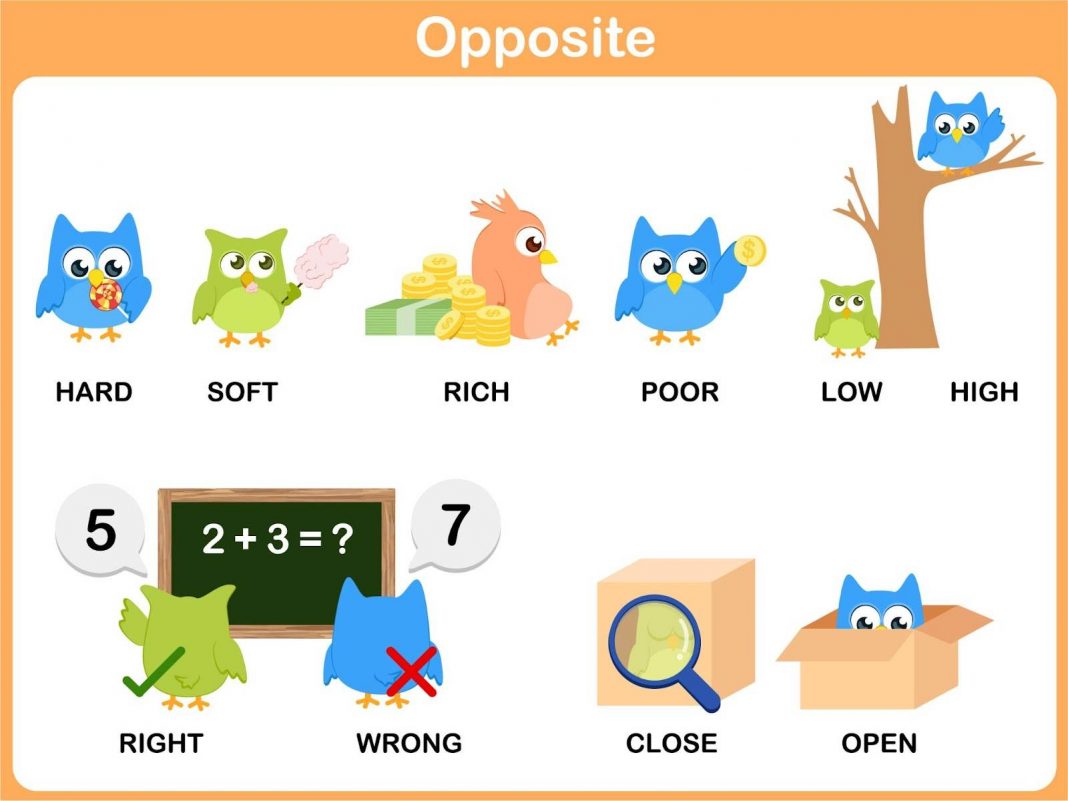Vocabulary is like a treasure chest for kids. The more words they know, the better they can express themselves. Today, we’re diving into a special kind of words called “opposite words for kids.” Opposite words are totally different pairs, like big and small or happy and sad.
Math & ELA | PreK To Grade 5
Kids see fun.
You see real learning outcomes.
Watch your kids fall in love with math & reading through our scientifically designed curriculum.
Parents, try for free Teachers, use for free
Learning opposite words is super important because it helps kids understand words and talk about things more clearly. In this blog, we’ll explore a list of opposite words for kids, why knowing opposite words is important, and how it can make learning English fun for kids.
Learning opposites from a list is a great idea to introduce kids to opposites or antonyms. However, such concepts need reinforcement. Here are some opposite/antonym worksheets that kids can use that include fun activities around the concept of opposites.
70+ Easy Opposite Words for Kids
| WORD | OPPOSITE |
|---|---|
| Big | Small |
| Hot | Cold |
| Fast | Slow |
| Happy | Sad |
| Young | Old |
| Early | Late |
| Light | Heavy |
| Hard | Easy |
| Clean | Dirty |
| Wet | Dry |
| Rich | Poor |
| Tall | Short |
| Right | Wrong |
| Open | Closed |
| Strong | Weak |
| Full | Empty |
| Good | Bad |
| Soft | Hard |
| High | Low |
| Near | Far |
| Loud | Quiet |
| Bright | Dark |
| Thick | Thin |
| Smooth | Rough |
| Wide | Narrow |
| New | Old |
| Heavy | Light |
| Simple | Complicated |
| Sharp | Dull |
| Sweet | Bitter |
| Beautiful | Ugly |
| Clean | Dirty |
| Safe | Dangerous |
| True | False |
| Brave | Cowardly |
| Generous | Stingy |
| Wise | Foolish |
| Polite | Rude |
| Quiet | Noisy |
| Fresh | Stale |
| Deep | Shallow |
| Hard | Soft |
| Push | Pull |
| Win | Lose |
| Laugh | Cry |
| Begin | End |
| First | Last |
| Give | Take |
| Above | Below |
| Many | Few |
| Empty | Full |
| Day | Night |
| Awake | Asleep |
| Inside | Outside |
| Front | Back |
| Stop | Go |
| Visible | Invisible |
| Accept | Refuse |
| Include | Exclude |
| Remember | Forget |
| Arrive | Depart |
| Borrow | Lend |
| Cool | Warm |
| Increase | Decrease |
| Lead | Follow |
| Raise | Lower |
| Succeed | Fail |
| Visible | Invisible |
| Advance | Retreat |
| Ascend | Descend |
| Compliment | Insult |
| Construct | Destroy |
| Defend | Attack |
| Enter | Exit |
| Fixed | Movable |
| Gather | Scatter |
5 Benefits of Learning Opposite Words In English For Kids
- Enhanced Vocabulary: Learning opposites for kids is like adding more colors to their vocabulary. When they know simple opposite words like hot and cold or fast and slow, it makes their vocabulary bigger and better!
- Improved Comprehension: Understanding opposite words for kids helps them understand stories, instructions, and conversations better.
- Critical Thinking Skills: Figuring out opposite words is like solving a fun puzzle! It makes kids think hard and use their brains to find words totally different from each other.
- Language Development: Learning opposite words isn’t just about knowing more words. It also helps kids learn how words work together and use them correctly in sentences.
- Enriched Expressive Skills: Using opposite words helps kids express themselves in a cool way. Instead of just saying “big,” they can say “huge” or “gigantic.” It makes their sentences more interesting and helps them better share their ideas and feelings.
7 Effective Ways To Teach Opposite Words to Kids
1. Opposite Worksheets
Worksheets featuring opposite-word exercises provide structured practice for kids to reinforce their learning. These worksheets typically include matching opposite words, matching with opposites, or drawing pictures to represent opposites. By completing these exercises, children strengthen their grasp of opposite words in a hands-on way.
Here are some fun opposites worksheets you can start with:
2. Interactive Games
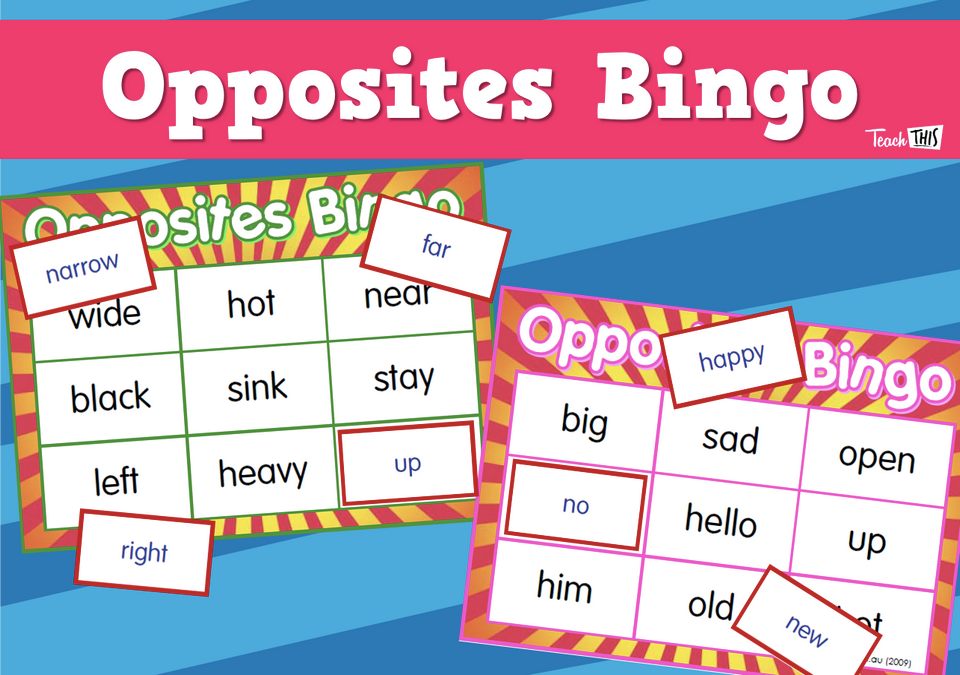
Interactive games add an element of excitement to learning opposite words. Games such as Bingo, Memory Match, or Opposite Word Puzzles make learning enjoyable and motivate kids. By actively participating in these games, children reinforce their understanding of opposite words while having fun.
Related Reading: Best Vocabulary Games to Play in Your Classroom
3. Storytelling
Storytelling is fun for introducing opposite words to kids. Incorporating opposite word pairs into stories entertains children and helps them understand the concepts in context. Through stories featuring opposites like big and small or hot and cold, children can visualize and remember the meanings more effectively.
Related Reading: Best Storytelling Activities for Kids
4. Utilize Visual Aids
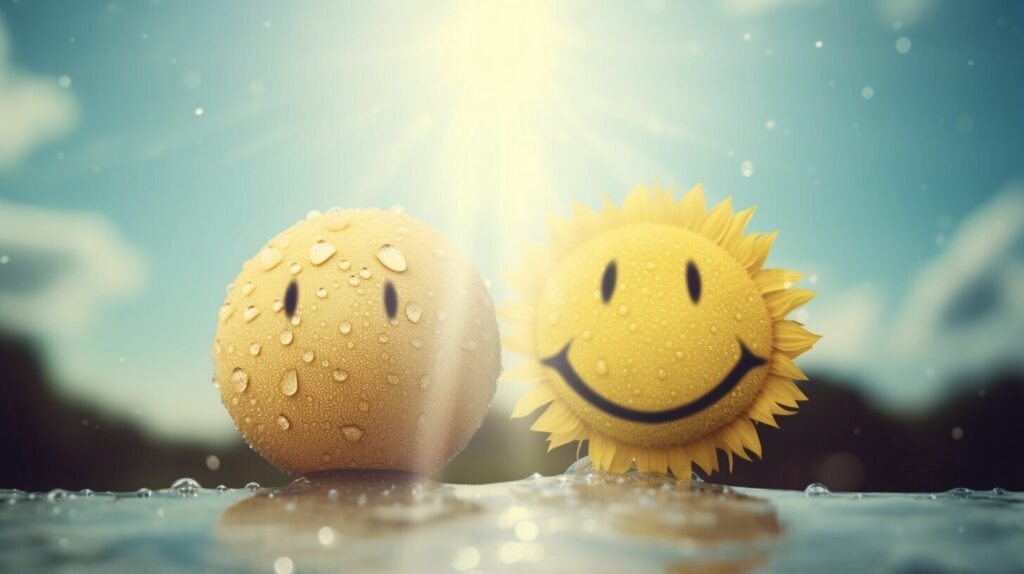
Visual aids like flashcards and illustrations are fantastic tools for teaching opposite words to kids. Showing images of simple opposite pairs, such as big and small or happy and sad, helps children grasp the concept easily. With visual aids, children can clearly see the differences between opposites, making learning engaging and effective.
Related Reading: What Are Teaching Aids? Types, Objectives & Examples
5. Songs and Rhymes
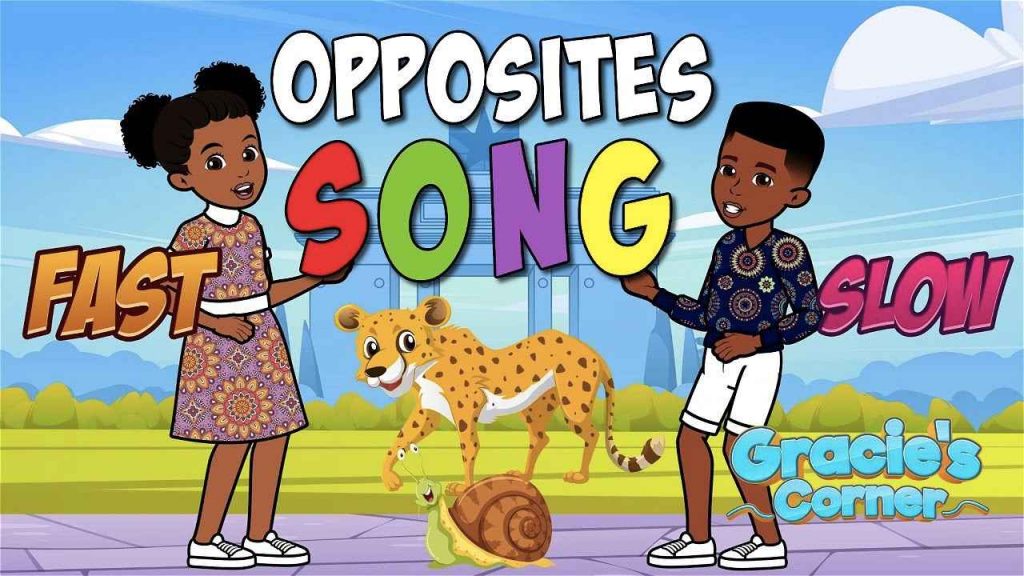
Music and rhythm enhance learning and memory retention, making songs and rhymes valuable for teaching opposite words. Creating catchy tunes or rhymes that incorporate opposites, such as in and out or up and down,, entertains children and helps them internalize the meanings of opposites through repetition.
6. Everyday Conversations
Opposite words surround us, making everyday conversations a natural opportunity to reinforce learning. By using opposite word pairs in daily discussions about the weather, objects, or actions, parents and educators can help children connect the concept of opposites to real-life situations, enhancing their understanding and retention.
7. Creative Activities
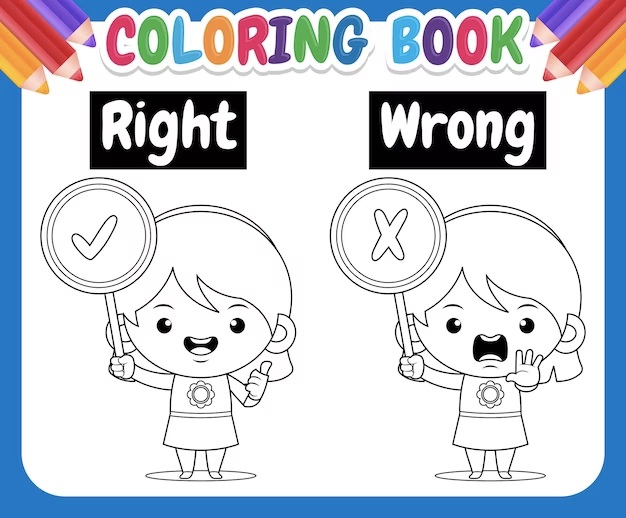
Encouraging creative expression through drawing, coloring, and crafts provides another avenue for teaching opposite words. Children can visually represent opposite word pairs by drawing contrasting images or creating crafts that illustrate opposites, like hot and cold or light and dark. Engaging in these creative activities makes learning opposite words a hands-on and enjoyable experience for kids.
Conclusion
By exploring the opposite words list, children not only expand their vocabulary but also enhance their understanding of language. With fun activities and games, teaching opposites to kids becomes an exciting journey that sparks their curiosity and creativity. So, let’s continue to encourage kids to explore the world of opposites and watch them grow into confident and articulate communicators!
Related Reading: What are Synonyms and How to use them?
Frequently Asked Questions (FAQs)
Why is it important for kids to learn opposite words?
Learning opposite words helps kids understand language better and express themselves more clearly. It also enhances their vocabulary skills and cognitive development.
At what age should children start learning opposite words?
Children can begin learning opposite words as early as preschool age, typically around 3-4 years old. However, the exact age may vary depending on individual readiness and exposure to language.
How can parents help reinforce opposite word learning at home?
Parents can engage children in everyday conversations using opposite word pairs, incorporate opposite words into storytelling sessions, and play games that involve identifying opposites. These activities make learning opposites fun and memorable for kids.
What are some opposites for kindergarten kids?
Kindergarten kids can learn simple opposite words like big and small, hot and cold, up and down, happy and sad, fast and slow.
How to teach opposites to kids?
To teach opposites to kids, start with simple and concrete examples that are part of their daily lives, such as “big” and “small,” “hot” and “cold,” or “up” and “down.” Use visual aids, games, and activities like matching cards, storytelling, or singing songs that incorporate opposite words to make learning engaging and interactive.

















